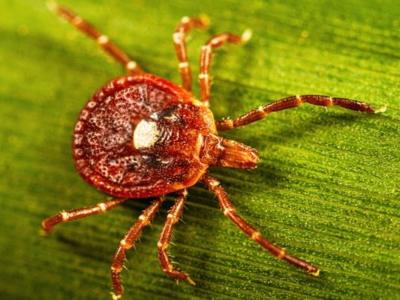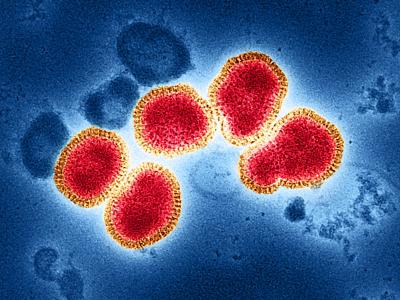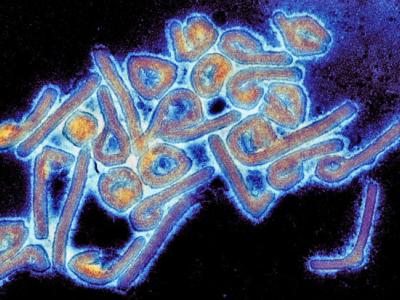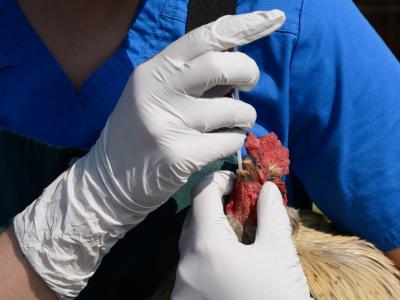Study: 1 in 100 hospitalized COVID-19 patients suffers brain complications
During a meeting tomorrow at the Radiological Society of North America (RSNA), scientists will present data from the largest multi-institutional international study to date on brain complications of COVID-19 and share that 1 in 100 patients hospitalized with COVID-19 will likely develop complications of the central nervous system like stroke, hemorrhage, and other potentially fatal complications.
The findings come from a study of nearly 40,000 hospitalized COVID-19–positive patients seen at seven hospitals in the United States and four university hospitals in Western Europe, according to an RSNA news release today. The patients were admitted from September 2019 through June 2020. Their average age was 66 years old.
In total, researchers identified 442 acute neuroimaging findings that were most likely associated with COVID-19 infection, for an incidence rate of 1.2%. Ischemic stroke was seen in 6.2% of the patients, followed by intracranial hemorrhage (3.72%) and encephalitis (0.47%).
"Our study shows that central nervous system complications represent a significant cause of morbidity and mortality in this devastating pandemic," study author Scott H. Faro, MD, professor of radiology and neurology and director of the Division of Neuroradiology/Head & Neck Imaging at Thomas Jefferson University in Philadelphia, said in the press release.
"It is important to know an accurate incidence of all the major central nervous system complications. There should probably be a low threshold to order brain imaging for patients with COVID-19."
Nov 29 RSNA press release
Initial COVID-19 more likely to lead to poor outcomes than reinfection
SARS-CoV-2 reinfections in Qatar were 90% less likely than primary infections to lead to hospitalization or death, finds a research letter last week in the New England Journal of Medicine (NEJM).
A team led by Weill Cornell Medicine-Qatar researchers compared primary COVID-19 cases from March through June 2020 with reinfections from January through April 2021, a wave fueled by the Alpha (B117) and Beta (B1351) variants but before the emergence of Delta (B1617.2). After the first pandemic wave, 40% of the population had measurable antibodies against the coronavirus.
The team used data on 353,326 Qataris with primary infection or reinfection to investigate the risk of severe disease leading to hospitalization, critical disease leading to admission to an intensive care unit, and fatal disease.
Among 1,304 reinfections, 31.7% were caused by the Beta variant, 4.4% were Alpha cases, 16.3% were wild-type infections, and 47.6% had unknown origins. Median time between primary infection and reinfection was 277 days.
Reinfections were rare and generally mild, perhaps because the immune system had already been primed. The chances of severe disease at reinfection were much lower than at primary infection (odds ratio [OR], 0.12).
No reinfections caused critical disease, compared with 28 at primary infection (OR, 0.00). No reinfected patients died, versus 7 with primary infections (OR, 0.00). The chances of the composite outcome of severe, critical, or fatal disease among reinfected patients were also much lower than at primary infection (OR, 0.10).
Reinfected patients had 90% lower odds of hospitalization or death than those at primary infection. Four reinfections were severe enough to lead to hospitalization, but all ended in recovery.
The authors said future research should determine whether natural immunity against severe illness at reinfection protects longer, similar to how short-term immunity develops against seasonal coronaviruses such as those that cause the common cold, with longer-lasting immunity against severe disease at reinfection.
"If this were the case with SARS-CoV-2, the virus (or at least the variants studied to date) could adopt a more benign pattern of infection when it becomes endemic," the researchers concluded.
Nov 24 NEJM research letter
Oklahoma reports novel flu case as US influenza levels continue slow rise
The US Centers for Disease Control and Prevention (CDC) today reported a novel H1 flu infection, the second novel influenza A case of the new flu season. In its latest FluView, delayed a few days because of the Thanksgiving holiday, the CDC also said flu activity is still low but continues to rise.
The novel H1 case involved an adult who was hospitalized for another illness but has since been discharged. He or she had direct swine contact at home and at an agricultural event before getting sick. No human-to-human transmission was reported, and tests are under way to determine the neuraminidase.
Meanwhile, US flu markers are still low but are rising slowly. Lab detections and clinic visits for flulike illness are increasing. The vast majority of infections involve the H3N2 strain, with 89% of them occurring in people ages 5 to 24 years old.
New Mexico and Georgia are the only states reporting high or moderate flu activity, as measured by outpatient visits. No pediatric deaths have been reported for the new flu season.
Nov 29 CDC FluView update
CWD detected for the first time in Idaho deer
Idaho recently announced that chronic wasting disease (CWD) was confirmed in the state for the first time on Nov 16, which has prompted an emergency hunt in certain areas to assess the extent of the spread.
In a recent statement, officials said two mule deer bucks harvested near Lucile in October tested positive. Lucile is in the west central part of the state, not far from the Oregon border. Samples were tested at the Colorado State University Veterinary Diagnostic Lab, and confirmation testing is underway at the US Department of Agriculture (USDA) National Veterinary Services Laboratories in Ames, Iowa.
Though CWD is known to have been in the western United States for more than 40 years, the recent detections mark the first time animals in Idaho have tested positive.
The area where the deer were harvested is known as unit 14, and health officials are encouraging anyone hunting in the location to have any deer or elk tested for CWD. On Nov 22, the Idaho Fish and Game Commission established emergency hunts to increase sampling to assess the extent of the spread and also designated game management units 14 and 15 as CWD management zones.
CWD, a fatal prion disease in cervids, has been found in 27 states and four Canadian provinces. Similar to mad cow disease (bovine spongiform encephalopathy), the disease is fatal. No human cases have been detected, but health officials warn of eating meat from CWD-infected animals.
Nov 17 Idaho Fish and Game press release
Nov 23 Idaho Fish and Game press release
Iran, France, UK report more high-path H5 avian flu in poultry
Iran is the latest country to report highly pathogenic H5 avian flu in poultry, and the United Kingdom reported another H5N1 outbreak in poultry, according to official notifications.
In Iran, animal health officials reported outbreaks affecting village poultry in three locations: one in Semnan province in north central Iran and two in Ardebil province in the northwest. According to a notification from the World Organisation for Animal Health (OIE), the outbreaks began on Oct 23, and, taken together, the virus killed 362 of 643 susceptible birds.
In Europe, France reported an H5N1 outbreak at a layer farm in Hauts-de-France, its northernmost region, according to the OIE. The outbreak began on Nov 21, killing 15,000 of 77,450 birds. Also, the UK Department for Environment, Food, and Rural Affairs (DEFRA) reported another H5N1 outbreak in poultry, the fifth to be reported in North Yorkshire.
In other avian flu developments, China's agriculture ministry reported a wild bird die-off in Hebei province due to H5N1, according to a statement translated and posted by Avian Flu Diary (AFD), an infectious disease news blog. The location is a nature preserve, and 134 bird were found dead. Hebei province is in eastern China.
Nov 22 OIE report on H5 in Iran
Nov 27 OIE report on H5N1 in France
Nov 29 DEFRA update
Nov 28 AFD post










